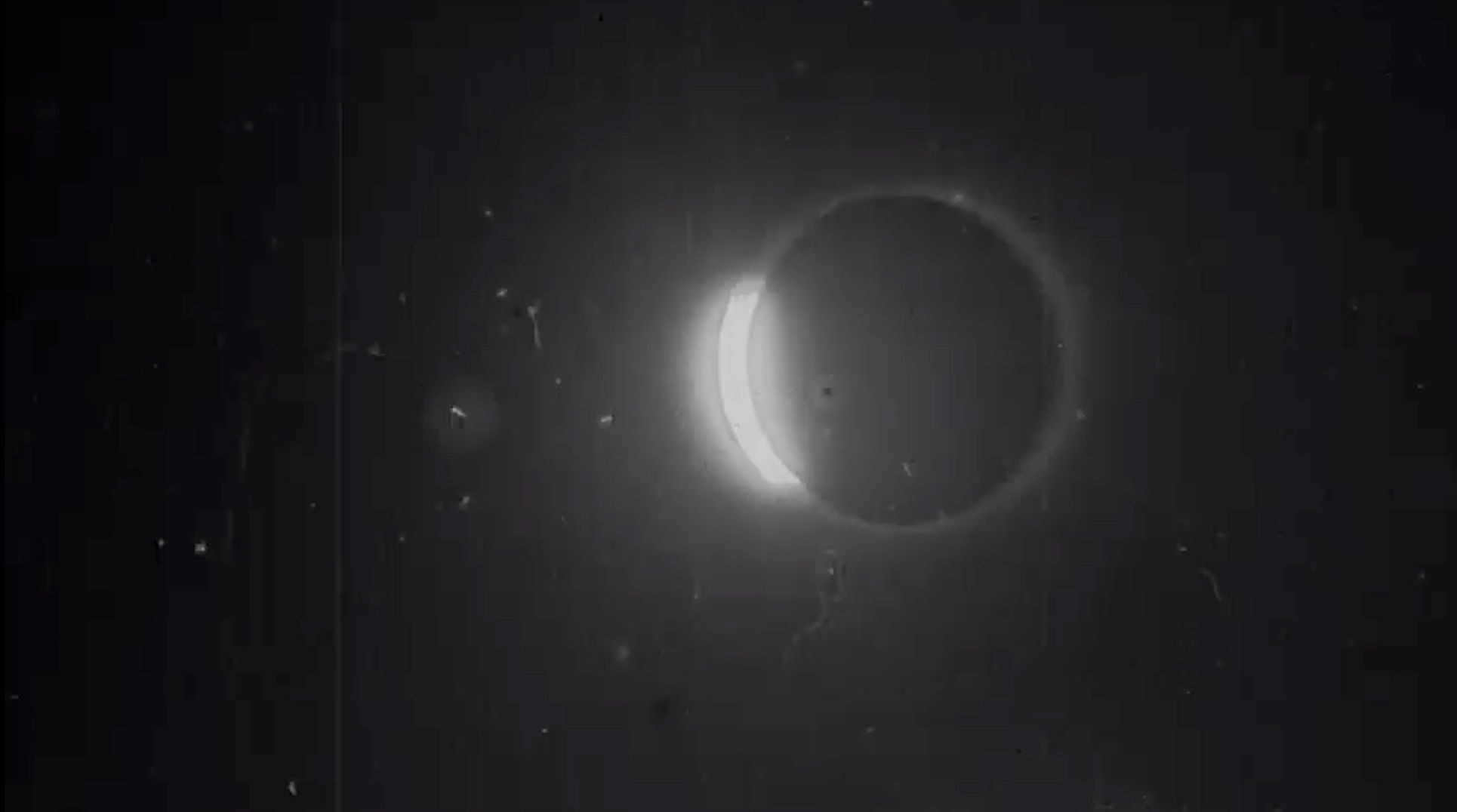Create a free profile to get unlimited access to exclusive videos, sweepstakes, and more!
World’s oldest solar eclipse footage reappears, and it looks like a real-life Melies movie

If you’re planning to catch the next solar eclipse, grab your shield glasses fast, because the next one’s less than a month away. But if you want to see the world’s oldest footage of the earliest eclipse that’s managed to survive on film, you can do it right now, thanks to a new unveiling from the British Film Institute.
Nearly 120 years old, the remarkable capture of the May 28, 1900, solar eclipse was first snagged by a magician named Nevil Maskelyne, who shot the full event with an early zoom-lens camera as part of a research effort by the British Astronomical Association, according to BFI and the Royal Astronomical Society.
Complete with film scratches and frame flickers, the brief, sped-up video looks like a real-life sci-fi project straight from the mind of legendary film pioneer Georges Méliès. In fact, it’s not too hard to imagine a skilled editor could cut the real-life eclipse footage straight into A Trip to the Moon, Méliès’ iconic 1902 space featurette, without a casual observer ever noticing the blend of reality and fantasy.
RAS says the original clip was recently rediscovered in its archives and promptly submitted to BFI’s restoration team, where it was “painstakingly scanned and restored in 4K by conservation experts” who went through the footage one frame at a time. It’s not the first solar eclipse ever filmed: Maskelyne shot an 1898 eclipse in India, only to have his film canister stolen afterward — but it is the first footage (which Maskelyne captured in North Carolina) that’s survived all the way to the present day.
The timing couldn’t be better to revisit one of nature’s most spectacular collective viewing events. With the next solar eclipse just around the corner on July 2 (and the next one after that a full 18 months distant), there’s no time like the present to catch a fascinating glimpse of how our appreciation for the solar system’s orbiting bodies continues to, well, come full circle.


























